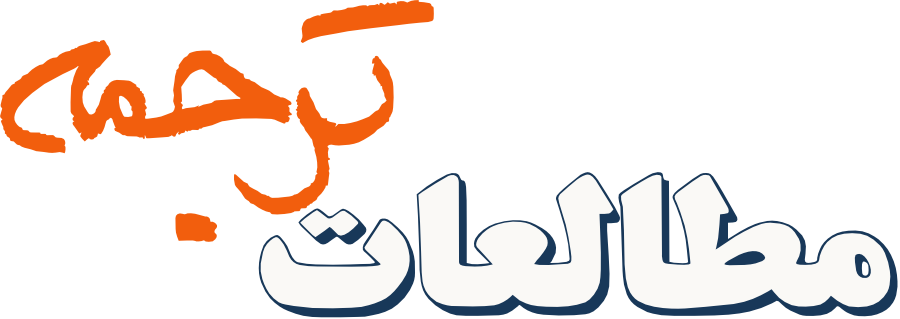تأثیر هویت ملی و تواناییهای شناختی بر تعداد دفعات تثبیت چشم مترجمان
آزمایش ردیابی چشم
چکیده
مقالة حاضر به بررسی تأثیر بالقوه هویت ملی و تواناییهای شناختی بر تلاش ذهنی مترجمان میپردازد. این مطالعة ردیابی چشم به این منظور انجام شد تا تلاش ذهنی افراد بر اساس هویت ملی و تواناییهای شناختی آنها را هنگامی که در خواست شود بر اساس استانداردهای صدا و سیمای جمهوری اسلامی ایران ترجمه کنند بررسی کند. برای انجام این آزمایش، هشت شرکتکننده برای ترجمة ده متنی که بار ایدئولوژیک داشتند در آزمایشگاه شناختی دانشگاه تهران حضور یافتند. تلاش ذهنی شرکتکنندگان با اندازهگیری تعداد دفعات تثبیت چشم آنها که معیاری رایج در ردیابی چشم است و از عملکرد آنها در حین ترجمه حاصل میشود، ارزیابی شد. پس از تکمیل آزمایش، دو پرسشنامه برای سنجش هویت ملی و تواناییهای شناختی به شرکت کنندگان داده شد. نتایج این آزمایش نشان داد که هویت ملی و تواناییهای شناختی شرکتکنندگان بر تعداد دفعات تثبیت چشم آنها که نشاندهنده تلاش ذهنی آنهاست، تأثیر میگذارد. به عبارت دیگر، بین نمرات هویت ملی و تواناییهای شناختی مترجمان همبستگی مثبتی مشاهده شد؛ و نمرات بالاتر حاصل شده از هویت ملی و تواناییهای شناختی با افزایش تلاش ذهنی مترجمان همراه بود. به این گونه که هرگاه از مترجمان خواسته شود بر خلاف هویت ملی خود ترجمه کنند، تلاش ذهنی آنها کاهش می یابد.
مراجع
Ahmadi, S. & Parham, F. (2022). Features of identity in translational and non-translational children’s literature. Language and Translation Studies, 55(3), 121–153.
Arabbeigi, F. (2021). Translational problems and use of digital resources: A process-oriented comparative study of professional vs. non-professional translators (Unpublished master’s thesis). Allameh Tabataba’i University.
Farahzad, F. & Ehteshami, S. (2011). Identity in translation. Iranian Journal of Translation Studies, 9(35), 45–56.
Ganji, N. (2024). The analysis of the relationship between editing styles and translation process through electroencephalography (Unpublished master’s thesis). Allameh Tabataba’i University.
Hvelplund, K. T. (2011). Allocation of cognitive resources in translation: An eye-tracking and key-logging study (Unpublished doctoral dissertation). Copenhagen Business School.
Jakobsen, A. L. (2017). Translation Process process Researchresearch. In J. W. Schwieter, & A. Ferreira (Eds.), The handbook of translation and cognition (pp. 21–49). Wiley Blackwell.
Laver, J., & Mason, I. (2018). A dictionary of translation and interpreting. Retrieved from http://fit-europe-rc.org/wp-content/uploads/2019/05/Dictionary-of-translation-and-interpreting-Mason-Laver.pdf
Marzani, F. Z. (2020). Simultaneous interpreting: A cognitive exploration using EEG and fMRI (Unpublished master’s thesis). Allameh Tabataba’i University.
Mousavi Razavi, M. S., & Allahdaneh, B. (2018). Cultural elements in the English translations of the Iranian resistance literature: A textual, paratextual, and semiotic analysis. Journal of Language and Translation, 8(1), 15–30.
Mousavi Razavi, M. S., & Mashaei, M. (2021). Manipulation in Persian translations of contemporary English novels: A corpus-based study. Research in Contemporary World Literature, 25(2), 665–690.
Mousavi Razavi, M. S., & Rad, A. (2019). Representation of anthropomorphic and non-anthropomorphic perceptions of God in English and Persian translations of the Holy Quran: A case study of “Yad [Hand]” and “Sāgh [Shin]”. Translation Studies of Quran and Hadith, 5(10), 181–215.
Nejati, V. (2013). Cognitive abilities questionnaire: Development and evaluation of psychometric properties. Advances in Cognitive Science, 15(2), 11–19.
Parham, F. & Marzani, F. Z. (2022). Employability of fMRI technique for the study of simultaneous interpreting process. In F. Parham (Ed.), Book of abstracts: The 1st RITS biennial international conference: Cutting-edge trends in translation and interpreting (p. 11). Research Institute for Translation Studies.
Parham, F. (2019). National identity in Persian translated immigrant literature. In L. Barciński (Ed.), National identity in literary translation (pp. 193–201). Peter Lang.
Rastegar, Y., & Rabani, A. (2013). An analysis of national identity and its sextet dimensions in Isfahan City. Jouranl of Applied Sociology, 24(2), 1–20.
Risku, H. (2014). Translation process research as interaction research: From mental to socio-cognitive processes. MonTI special issue: Minding Translation, 331–353.
Rojo, A. (2015). Translation meets cognitive science: The imprint of translation on cognitive processing. Multilingua, 34( [6)], 721–746.
Rojo, A. & Ramos, M. (2014). The impact of translator’s ideology on the translation process: A reaction time experiment. MonTI Special issue: Minding translation, 247–271.
Tymoczko, M. (2003). Ideology and the position of the translator: In what sense is a translator “In between”? In M. Calzada Perez (Ed.), Apropos of ideology: Translation studies on ideology-ideologies in translation studies (pp. 181–201). St. Jerome.
Tymoczko, M. (2007). Enlarging translation, empowering translators. Routledge.
Van Dijk, T. A. (1995). Discourse analysis as ideology analysis. In C. Schäffner & A. L. Wenden (Eds.), Language and peace (pp. 17–33). Dartmouth.
Van Dijk, T. A. (1998). Ideology. A multidisciplinary approach. Sage.
Van Dijk, T. A. (1998). Opinions and ideologies in the press. In A. Bell, & P. Garrett (Eds.), Approaches to media discourse (pp. 21–63). Blackwell.
Venuti, L. (1999). The translator’s invisibility. Taylor & Francis.
Vieira, L. N. (2016). Cognitive effort in post-editing of machine translation: Evidence from eye movements, subjective ratings, and think-aloud protocols. UK: Newcastle University. Retrieved from http://hdl.handle.net/10443/3130
Wodak, R. (2002). Aspects of critical discourse analysis. Zeitschrift fur Angewandte Linguistik, 36(10), 5–31.
Downloads
چاپشده
ارجاع به مقاله
شماره
نوع مقاله
DOR
مجوز
حق نشر 2024 Mina Mirzaee, Fatemeh Parham

این پروژه تحت مجوز بین المللی Creative Commons Attribution-NonCommercial 4.0 می باشد.
Copyright Licensee: Iranian Journal of Translation Studies. This article is an open access article distributed under the terms and conditions of the Creative Commons Attribution–NonCommercial 4.0 International (CC BY-NC 4.0 license).





